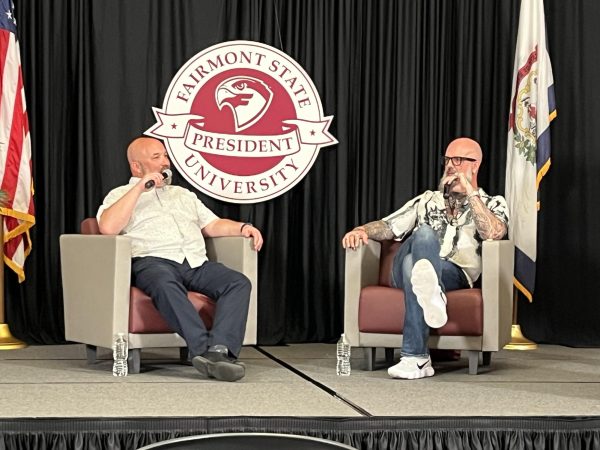Bystander Intervention for a Safer Campus
On Wednesday, April 7th , Fairmont State University held a Bystander Intervention Training as part of Sexual Assault Awareness Month. The event was hosted by Jessica Kropog, Title IX and ADA Coordinator and Compliance Specialist at Fairmont State. She shared with students how to be a campus leader through intervening in situations of harassment, both online and in-person, to create a better environment at Fairmont State.
Kropog informed students of the prevalence of sexual assault on college campuses, with 1 in 5 female and 1 in 14 male students across the US being sexually assaulted during their time in college. However, only 10% sexual assaults are formally reported, meaning that there is a lack of reporting not only in victims and perpetrators but also the bystanders who may witness these sexual assaults. This is why bystander education is so important. Kropog explains, “It is a primary prevention method to encourage responsive bystander behavior to spread the responsibility for safety to the community as a whole.” Bystander intervention can not only help curb sexual assault on campuses, but also other forms of violence, such as bullying, harassment, and assault.
Bystander intervention works in that it stops perpetrators from committing their violent acts due to the pressure of others, since people make decisions and continue actions based on the reactions they get from others. Bystander intervention also prevents other people from beginning to do acts of violence, as Kropog explains, “People are more likely to do something if they see others doing it as well. Someone has to be the campus leader and intervene.” As more people on campus step up as leaders in curbing harassment, the safer Fairmont State can be as a whole.
Kropog also shared methods of intervention with students, such as causing the aggressor to focus on something, shifting the focus of the situation to you, or calling the police. Kropog suggests using the 3 D’s of “Direct, Distract, and Delegate” when trying to stop violence from occurring on campus. One must directly address the people involved and tell them you are concerned, then one should distract the people involved, and lastly one should delegate the situation to a friend, policeman, etc. if one feels they cannot completely resolve the issue.
Harassment does not only occur in person, though, as many Americans today experience harassing behaviors online. Virtual harassment includes a wide variety of harmful actions done online, including repeated hateful of discriminatory messages, threats, defamation, and publishing of personal information. Kropog also shared virtual bystander intervention methods, such as directly responding to the perpetrator, offering support to the victim, and reporting the incident to the online platform. Kropog reminds students that online abuse is just as hurtful as in-person abuse, but one can still use bystander intervention techniques online to help stop the violence.
Kropog shared one last final piece of advice a bystander can do, and that is taking care of oneself while taking care of others. Kropog reminds students, “Exposure to online harassment, even if you are not the target, can cause secondary trauma, anxiety, and burnout. Reading abusive and violent content can take its toll. Take care of yourself so that you can continue to help others.” Kropog encourages taking breaks from social media and disengaging from social media, if needed, to protect your mental health. When one is able to take care of themselves, they will be more equipped and ready mentally to help others.







